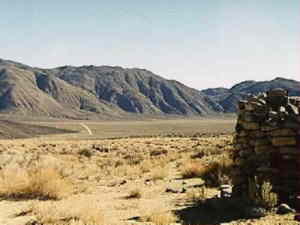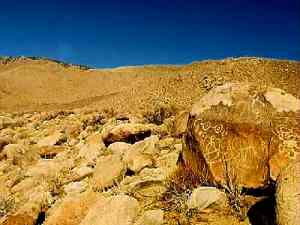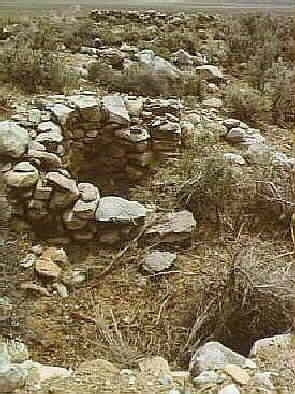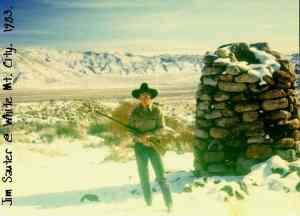| WHITE MOUNTAIN CITY | |
|
|
|
NAME: White
Mountain City COUNTY: Inyo ROADS: 2WD GRID #(see map): 3 CLIMATE: Warm summers, winter days can be pleasant or raw. Elevation 5,000' so snow is a possibility.. BEST TIME TO VISIT: All year. |
COMMENTS: Many
ghost towns in the area. REMAINS: Many stone ruins, two fine arrastras, two smelter remains. |
|
White Mountain City was founded in the
early 1860's and a district formed in a deep bowl far from any
form of civilization. The area was notorious for a scandal that
occured in which a successfull candidate in the gubernatorial
runoff of the state of California "padded" the elections
by grossly exagerating the number of those who voted for him
from White Mountain City. He figured that since White Mountain
City was so remote that no one would check on it. It was later
found that he utilized a list of passengers from a steamship
for the basis of White Mountain City voters. Meanwhile, only
a handfull of settlers to the Deep Springs Valley were found
to be living there, and these were primarily occupied in defending
themselves from Indian attacks besides eeking out a meager living
along the banks of Wyman Creek. A notible visitor to White Mountain
City was none other than Mark Twain, who at the time was living
in Aurora, Nevada. Mining on a small scale continued throughout
the 1870's, then continued occassionally thereafter by individuals.
In 1911, a unique college was built nearby, which today continues
the tradition of its founder in that only the most gifted academic
students can attend. It's philosophy is that hard ranch work,
along with deep study, will help temper and train California's
brightest minds.  Remains of a smelter stack. April 1997. Courtesy David A. Wright  Evidence that Indians found the banks of Wyman Creek to be a good home. They later resented the white settlers of White Mountain City and conducted periodic attacks on them until they were reigned in and sent off to Camp Independence, then later Fort Tejon near today's Bakersfield. January 1997. Courtesy David A. Wright  Remains of a smelter oven. Slag and fire clay can still be found within the stonework. April 1997. Courtesy David A. Wright  My friend, Jim Sauter, stands in front of the furnace stack at White Mountain City. Winter, 1983. Courtesy David A. Wright
|
|
|---|
|
|